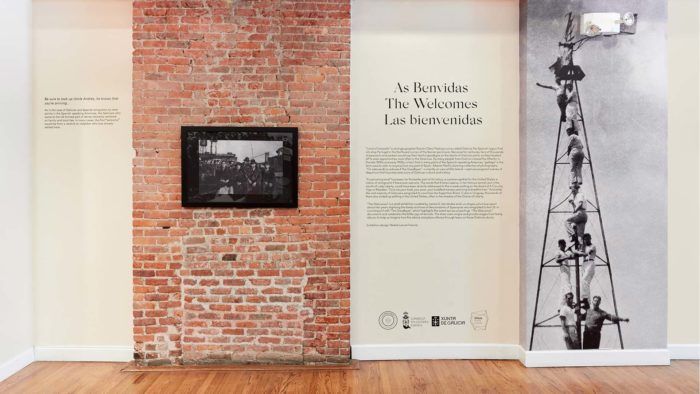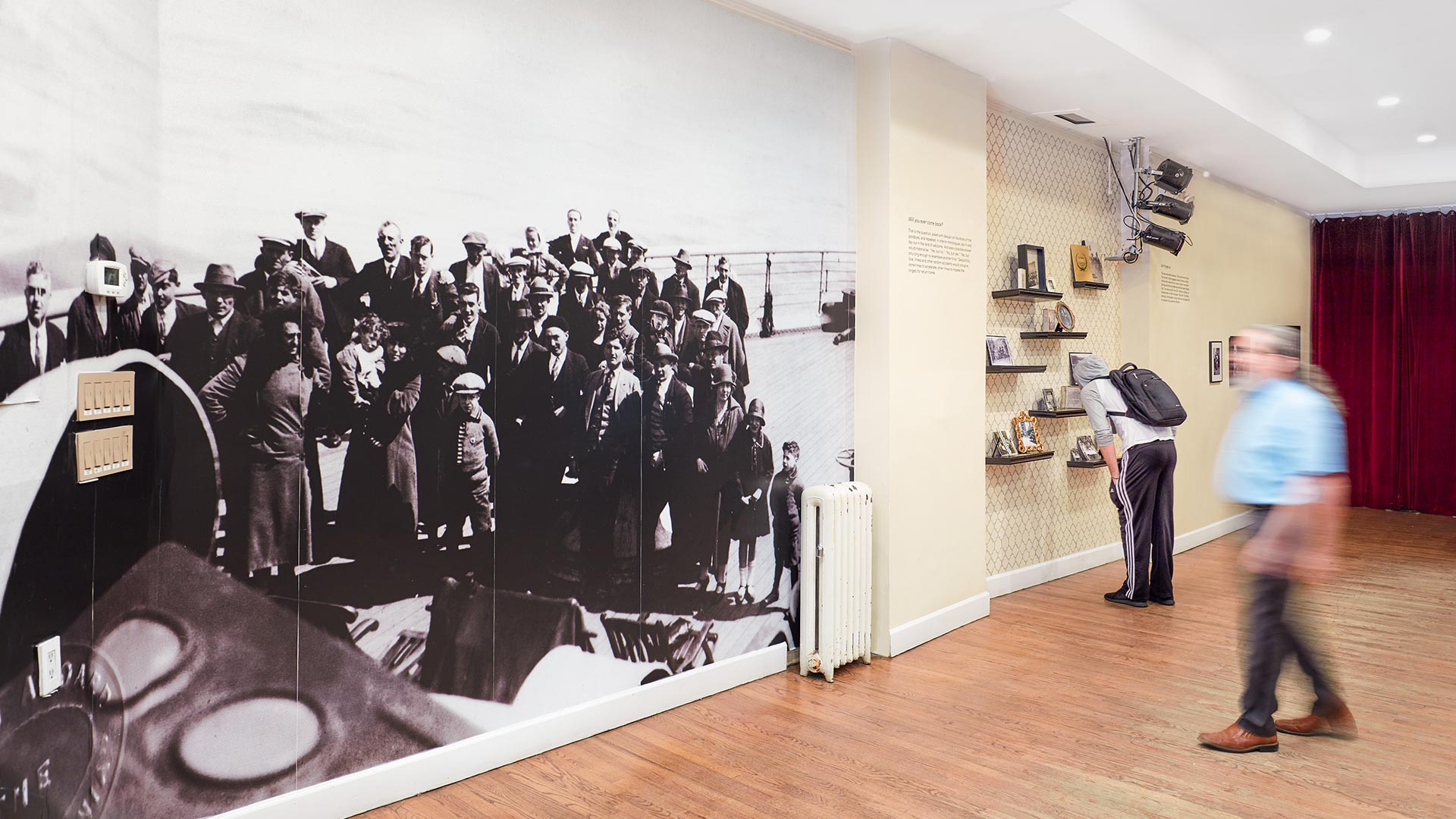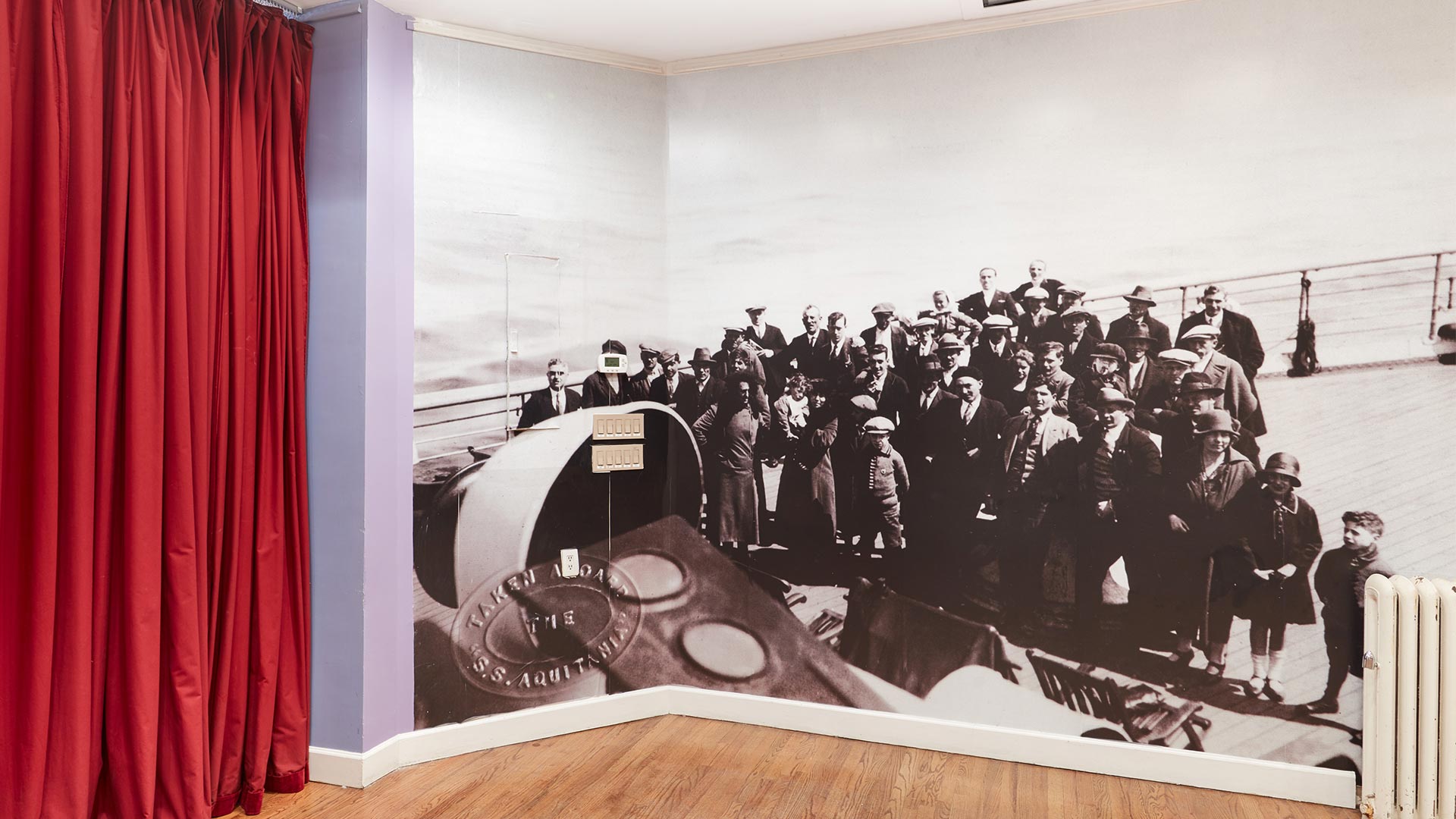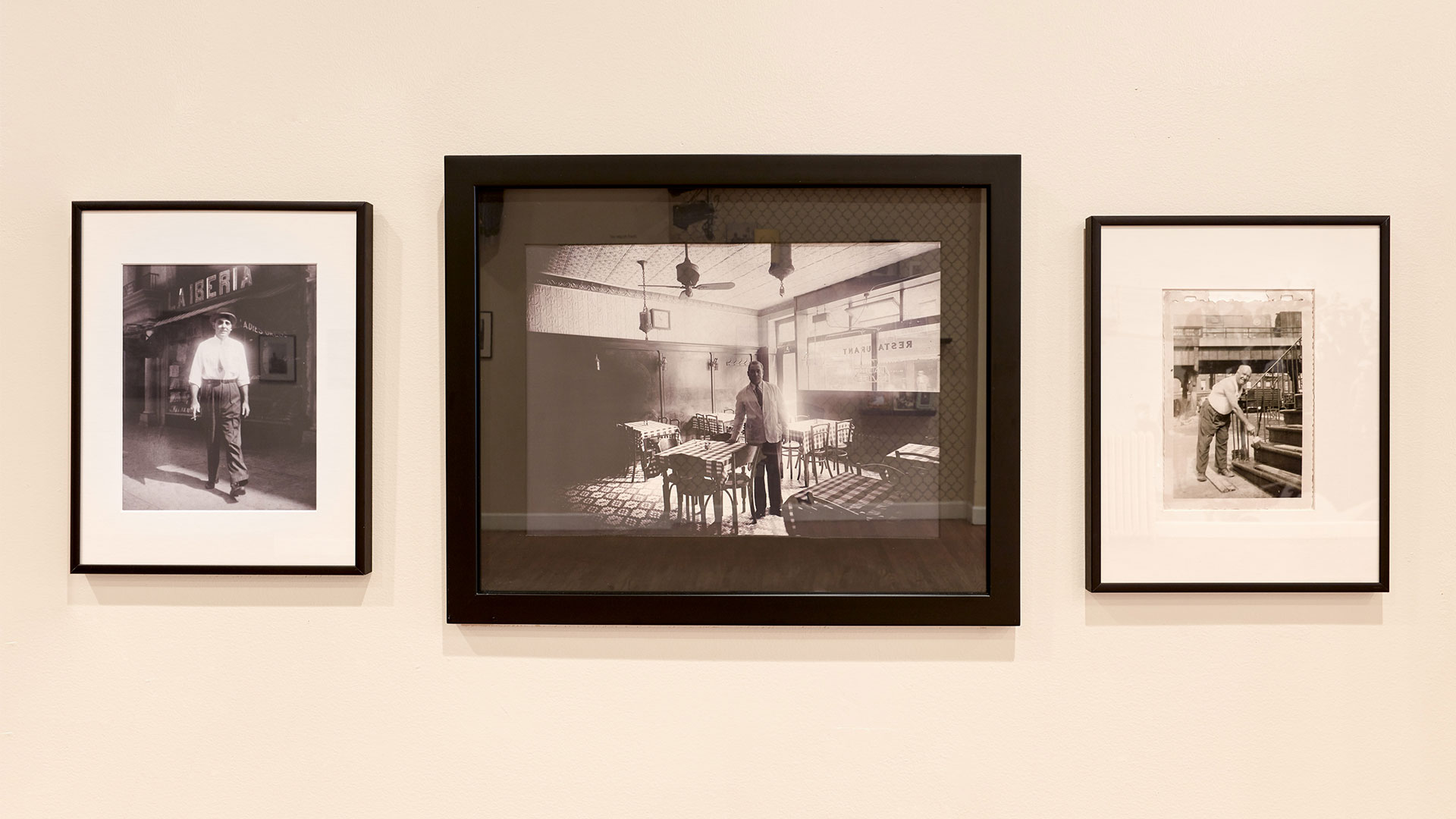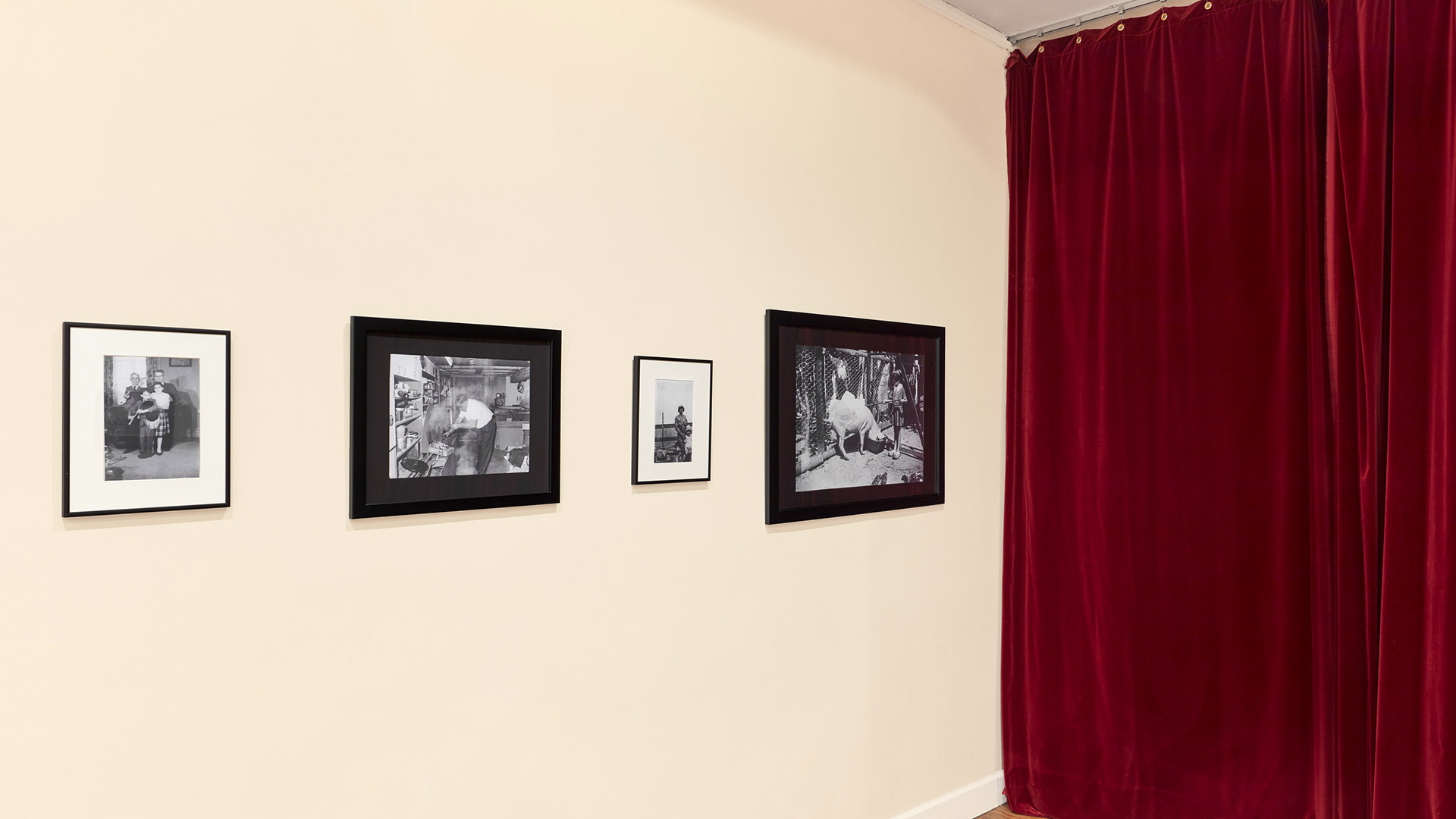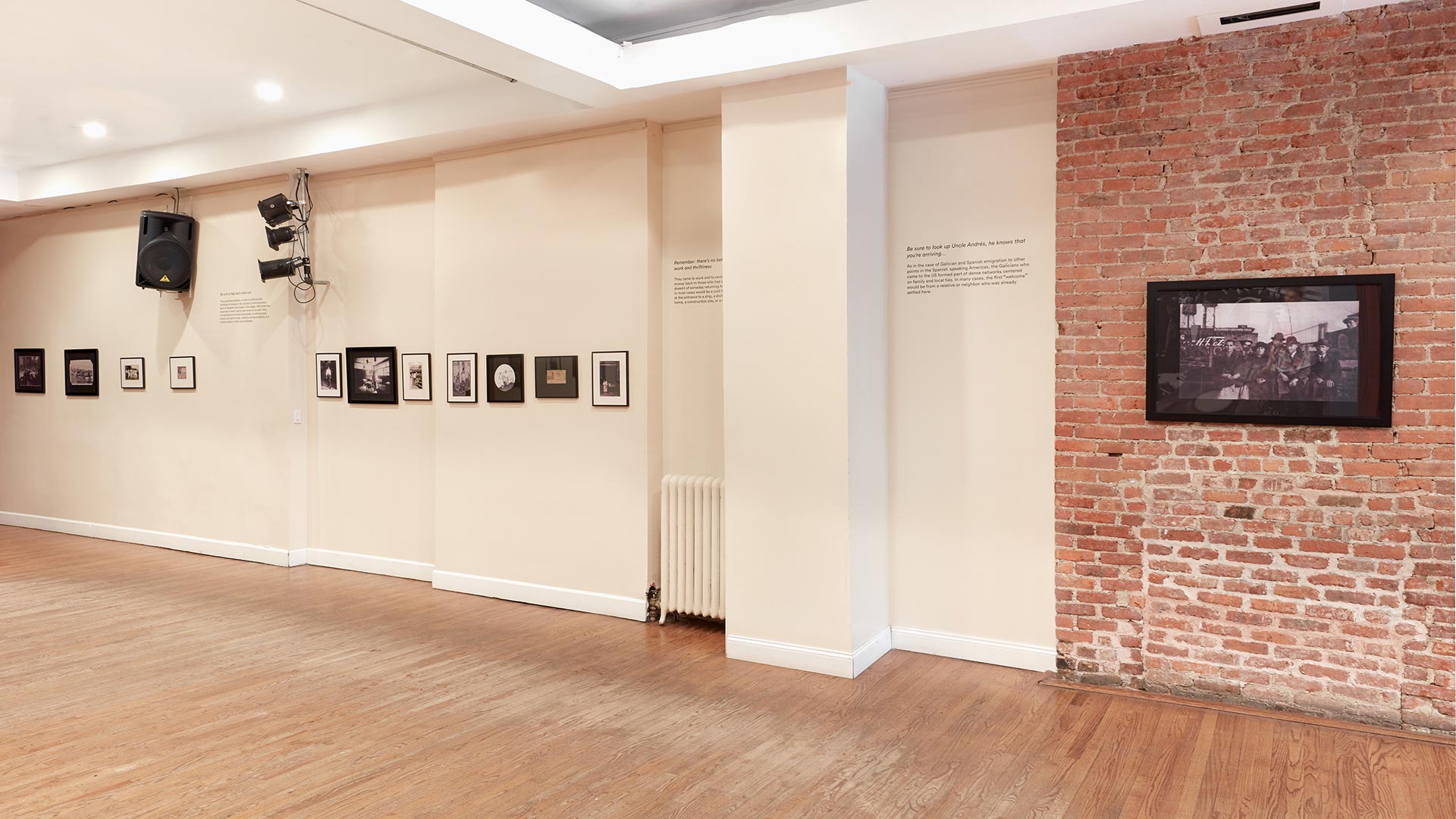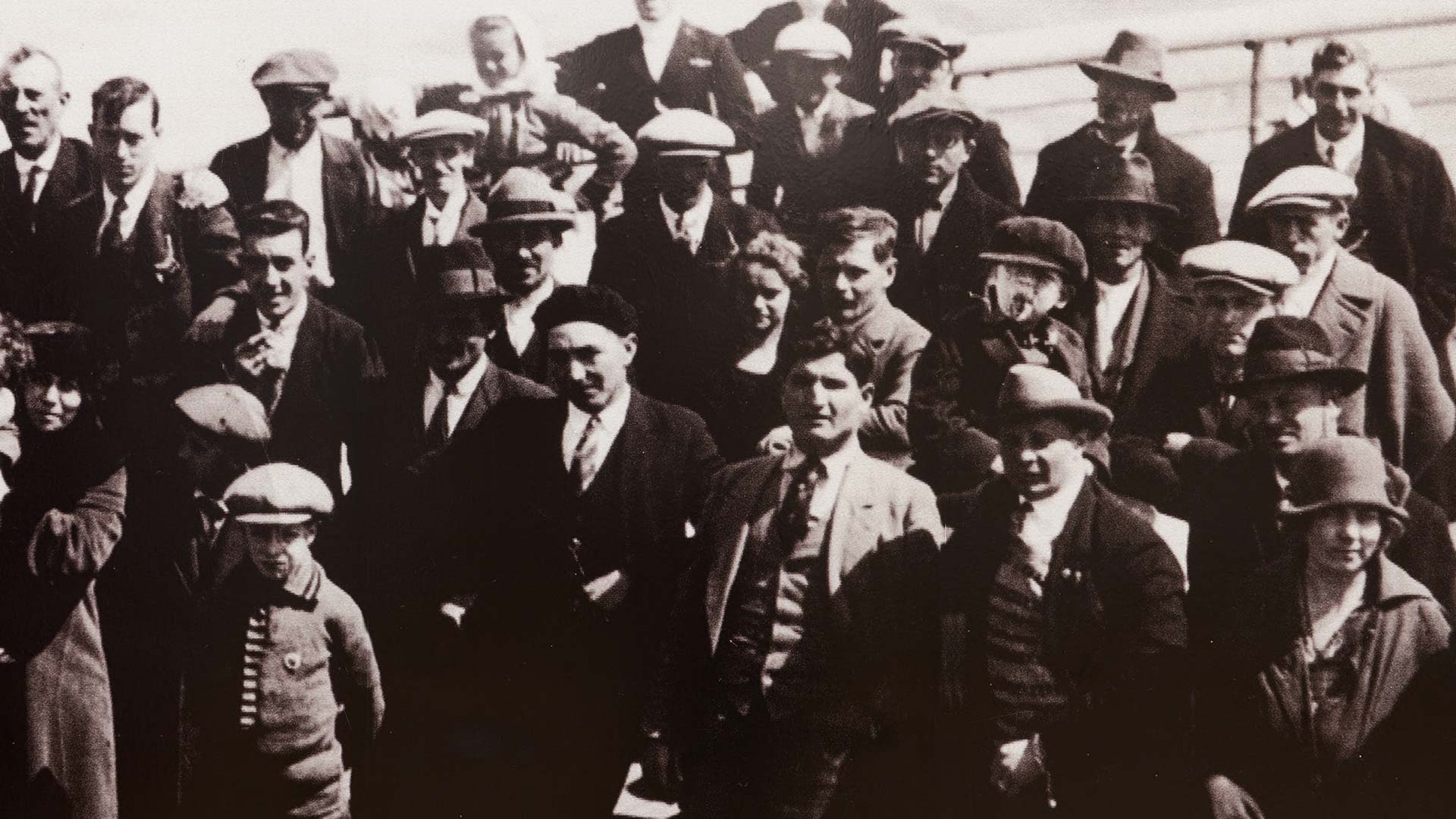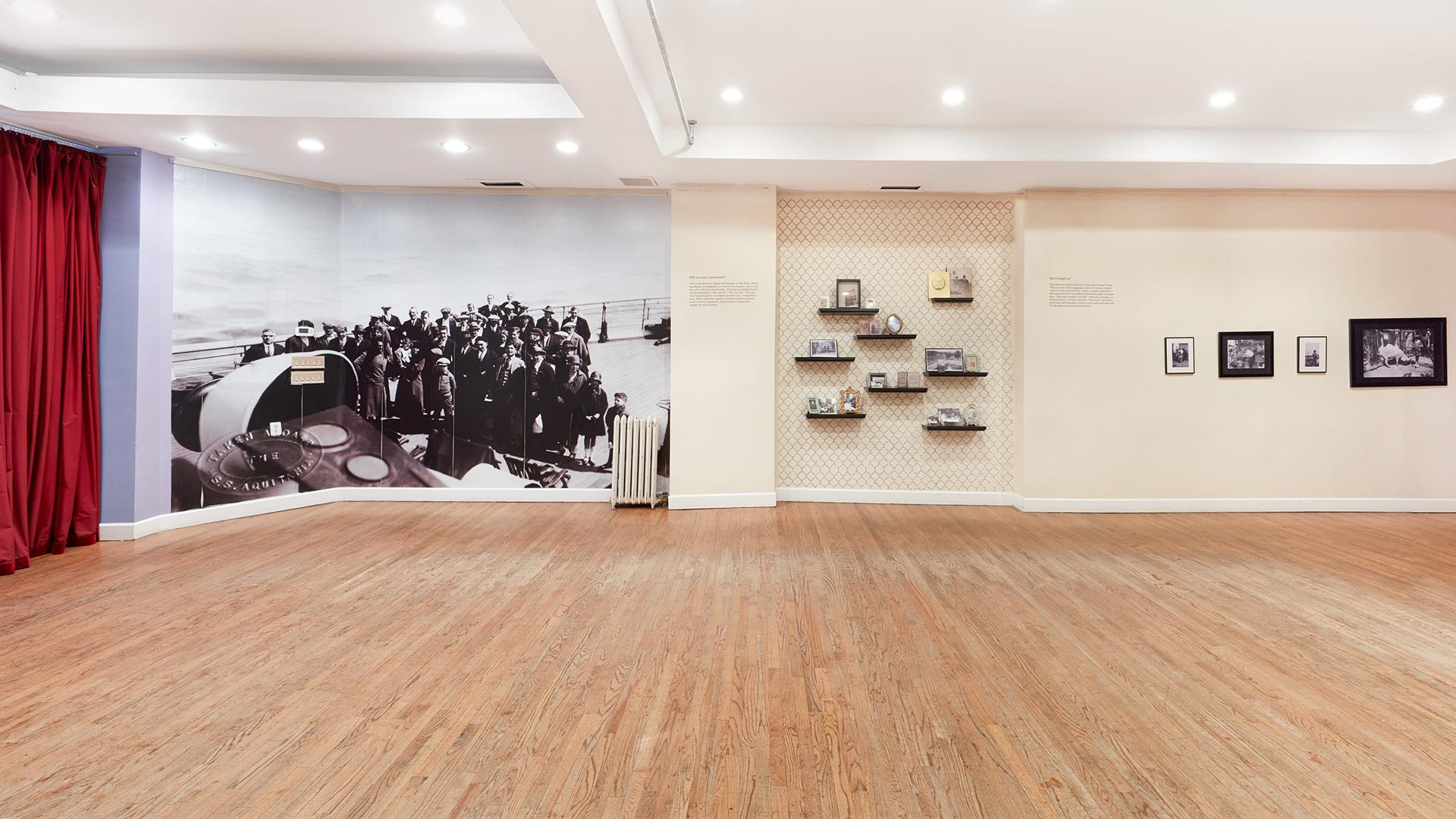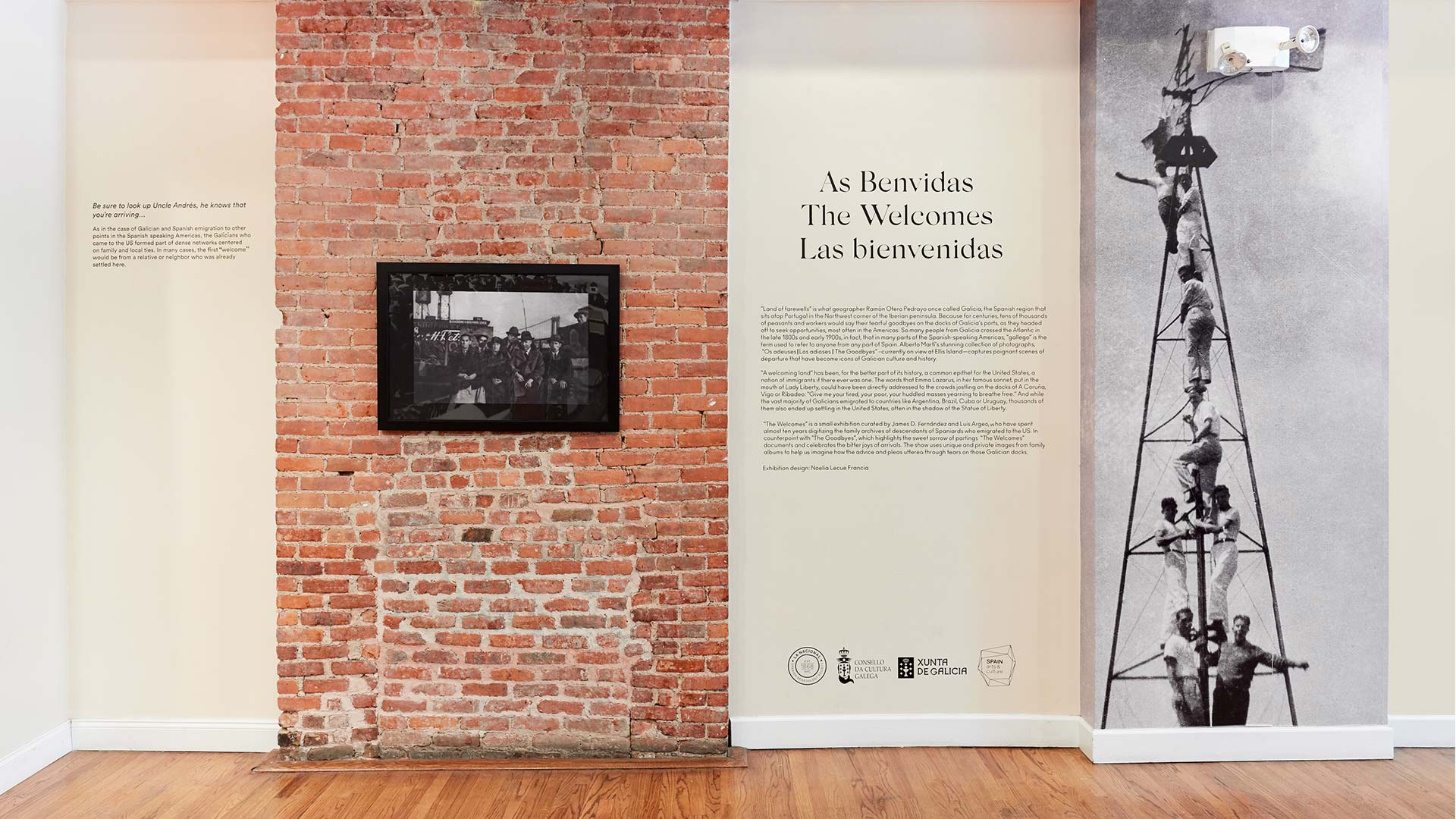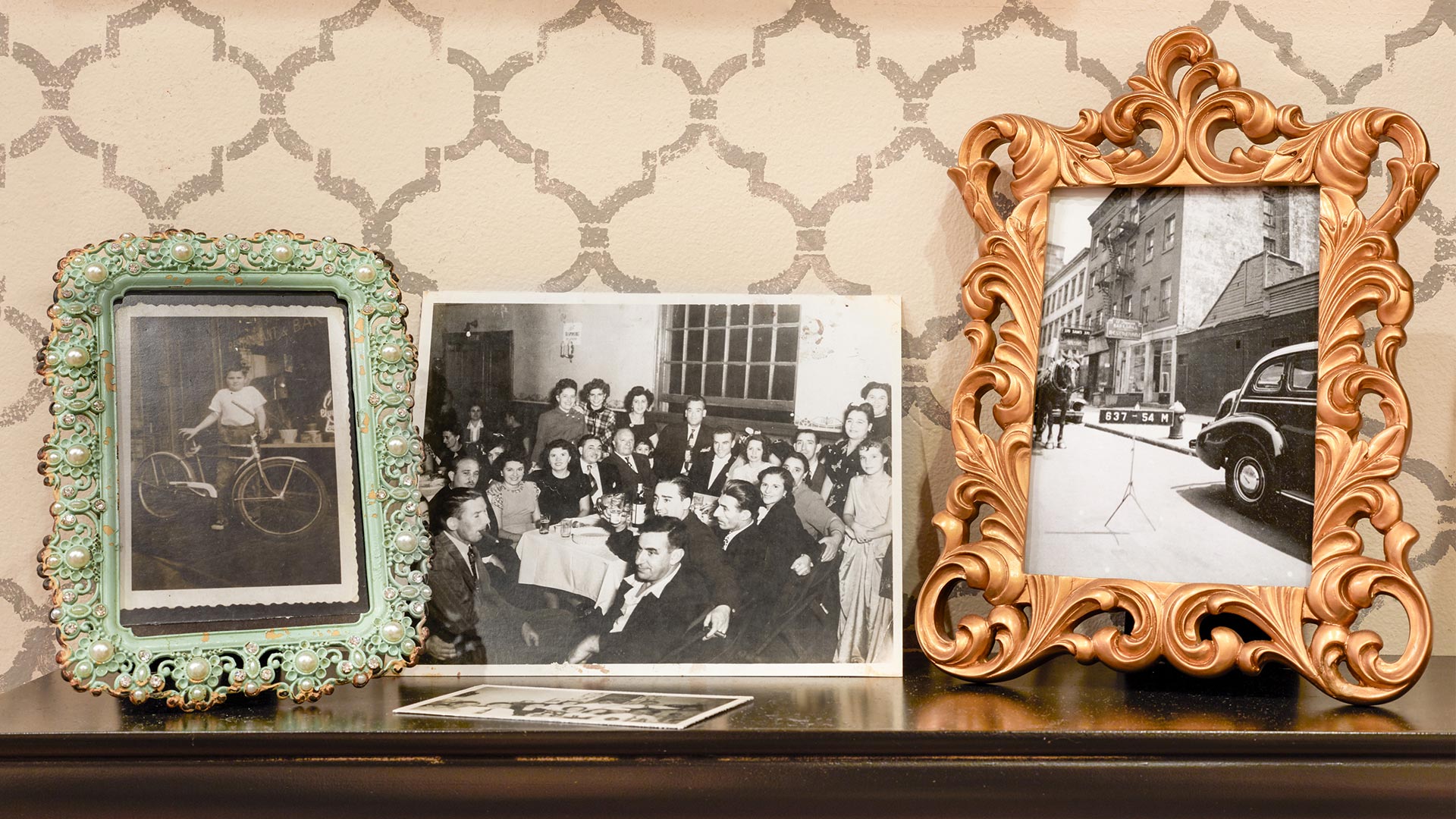Dates / Fechas:
April 16 – May 15, 2019
Opening Reception / Inauguración:
Tuesday April 16, 2019, 6:30PM
Venue / Lugar:
La Nacional-Spanish Benevolent Society 239 W 14th Street, New York
Collaboration Role / Rol de colaboración:
Production and Exhibition Design
More info / Más información:
Catalog Pdf
“Land of farewells” is what geographer Ramón Otero Pedrayo once called Galicia, the Spanish region that sits atop Portugal in the Northwest corner of the Iberian peninsula. Because for centuries, tens of thousands of peasants and workers would say their tearful goodbyes on the docks of Galicia’s ports, as they headed off to seek opportunities, most often in the Americas. In fact, so many people from Galicia crossed the Atlantic in the late 1800s and early 1900s, that in many parts of the Spanish-speaking Americas, “gallego” is the term used to refer to anyone from any part of Spain. Alberto Martí’s stunning collection of photographs, “Os adeuses / Los adioses / The Goodbyes” –currently on view at Ellis Island— captures poignant scenes of departure that have become icons of Galician culture and history.
“A welcoming land” has been, for the better part of its history, a common epithet for the United States, a nation of immigrants if there ever was one. The words that Emma Lazarus, in her famous sonnet, put in the mouth of Lady Liberty, could have been directly addressed to the crowds jostling on the docks of A Coruña, Vigo or Ribadeo: “Give me your tired, your poor, your huddled masses yearning to breathe free.” And while the vast majority of Galicians emigrated to countries like Argentina, Brazil, Cuba or Uruguay, thousands of them also ended up settling in the United States, often in the shadow of the Statue of Liberty.
“The Welcomes” is an exhibition curated by James D. Fernández and Luis Argeo (authors of the book Invisible Immigrants: Spaniards in the US 1868-1945), who have spent almost ten years digitizing the family archives of descendants of Spaniards who emigrated to the US. In counterpoint with “The Goodbyes”, which highlights the sweet sorrow of partings, “The Welcomes” documents and celebrates the bitter joys of arrivals. The show uses unique and private images from family albums to help us imagine how the advice and pleas uttered through tears on those Galician docks continued to echo in the minds of the emigrants as they struggled and adapted to their new lives in the US.
The Welcomes is an exhibition of early twentieth-century photographs of Spanish (Galician) immigrants in New York.
James Fernández, Art historian and Curator
Sponsored by the Council of Galician Culture, the Xunta de Galicia, the Spanish Consulate in New York, and Centro Español- La Nacional, “The Welcomes” was designed by Noelia Lecue Francia, actual curator at La Nacional – Spanish Benevelont Society, which, founded in 1868, is the oldest Spanish benevolent society in the US.
“Tierra de adioses”: así describió alguna vez el gran geógrafo e intelectual Ramón Otero a Galicia. Durante siglos, miles de campesinos y trabajadores se han despedido de sus queridos en los puertos de Galicia, saliendo en busca de oportunidades, muchas veces en las Américas. Fueron tantos los gallegos que atravesaron el Atlántico que en muchas regiones de las Américas hispano-hablantes, el término “gallego” se usa para referirse a todos los españoles, nacieran o no en Galicia. La impresionante muestra de fotografías de Alberto Martí, “Os Adeuses/Los Adioses”, ahora expuesta en Ellis Island, documenta estas desgarradoras escenas de despedida tan emblemáticas de la cultura e historia gallegas.
The Welcomes/ As benvidas/ Las bienvenidas, una exposición de fotografías de inmigrantes españoles (gallegos) de principios del siglo XX en Nueva York.
James Fernández, Comisario de la exposición junto con Luis Argeo
“Tierra de bienvenidas” ha sido, durante gran parte de su historia, un apto epíteto para los Estados Unidos, una nación de inmigrantes donde la haya. Las palabras que Emma Lazarus, en su famoso soneto, pone en los labios de la Estatua de la Libertad podrían haber sido dirigidas directamente a las masas apiñadas en los puertos de A Coruña, Vigo o Ribadeo: “Entregadme a vuestros fatigados, a vuestros miserables, a vuestras masas agazapadas que añoran respirar con libertad.” Mientras que la mayoría de gallegos emigraron a países como Argentina, Brasil, Cuba o Uruguay, miles de ellos también terminaron por asentarse en los Estados Unidos, muchas veces casi a la sombra de la Estatua de la Libertad.
“Las Bienvenidas” es una exposición comisariada por James D. Fernández y Luis Argeo, quienes han invertido casi diez años digitalizando los archivos familiares de españoles emigrados a EEUU. En diálogo con “Os adeuses”, que resalta el sabor agridulce de las partidas, “Las Bienvenidas” documenta y celebra las amargas alegrías de las llegadas. Nos ayuda a imaginar la otra cara de la historia que cuentan las fotos de Martí. Porque lo que en “Os adeuses” parece un punto final, se transmuta en “As benvidas” en un nuevo comienzo.
Imaginémonos: ¿Qué consejos oían entre sollozos los que se despedían en Galicia para probar suerte en Nueva York?
James Fernández, Comisario de la exposición junto con Luis Argeo
Patrocinada por el Consejo de Cultura de Galicia, el Consulado de España en Nueva York y el Centro Español-La Nacional, la exposición, con espectaculares fotos escaneadas de álbumes familiares privados, está destinada a complementar la muestra de fotografías de Alberto Martí: The Goodbyes / Os adeuses / Los adioses–que se puede ver hasta mayo en Ellis Island.
“Las bienvenidas” es una exposición comisariada por James D. Fernández y Luis Argeo, autores del libro Invisible Immigrants: Spanish in the US (1868-1945), y diseñada por Noelia Lecue Francia. La Nacional, fundada en 1868, es la sociedad benevolente española más antigua de los Estados Unidos.



ABOUT THE CURATORS
Luis Argeo, Piedras Blancas, 1975. Graduate in Information Sciences from the UPSA in Salamanca. He combines the writing of books and travel reports with the making of videos and documentary films. He has more than a dozen travel guides published with the publishing house Anaya Touring. AsturianUS (2006) was his first documentary project as a scriptwriter, producer and director, which has been followed by small audiovisual pieces such as Balta (2008) and La casa de la abuela Marina (2008). His second feature documentary, Corsino, by Cole Kivlin (2010) participated in independent film festivals such as FICXixón (Spain) or BAFICI (Argentina). In 2011 he made the set of eight video-portraits for the collective exhibition Retrato de Familia (Valey Centro Cultural de Castrillón).
James D. Fernández (Brooklyn, NY, 1961) received his BA magna cum laude from Dartmouth College, and his MA and PhD in Romance Languages and Literatures from Princeton University. He taught as an Assistant and later Associate Professor at Yale University (1988-1995) before moving to New York University (NYU), where he has been since 1995. He was the inaugural director of NYU’s King Juan Carlos I of Spain Center for 12 years (1995-2007), and has served since 2002 as Vice-Chair of the Board of Governors of the Abraham Lincoln Brigade Archives.
Fernández is the author of Brevísima relación de la construcción de España y otros ensayos transatlánticos (Madrid: Polifemo, 2013), and Apology to Apostrophe: Autobiography and Rhetoric of Self-Representation in Spain (Durham: Duke University Press, 1992). He is also the co-editor (with Peter N. Carroll) of Facing Fascism: New York and the Spanish Civil War (New York, NYU Press and the Museum of the City of NY, 1997).
In collaboration with the Spanish journalist and documentarian, Luis Argeo, Fernández has co-authored the book Invisible Immigrants: Spaniards in the US (1868-1945), and three documentary films: Dan Albert’s Paella/La paella de Daniel Albert (2012); A Legacy of Smoke/ Un legado de humo (2014); The Weight of Remembering/La plomada (2017).
In addition to his published scholarship and film work, Fernández has considerable experience in the realm of exhibitions. He curated the exhibition “The Cultural Legacy of the Abraham Lincoln Brigade” and served on the advisory committees of two major shows: “Facing Fascism: New York and the Spanish Civil War” at the Museum of the City of New York (2007-2008) and “Nueva York: 1613-1945” at the New-York Historical Society and the Museo del Barrio (2009). Fernández also curated the photographic exhibition “La colonia: A photo album of Spanish Immigrants in NY, 1898-1945” which opened in NY in 2009 and later traveled to several venues in Spain over the next two years.
Luis Argeo, Piedras Blancas, 1975. Licenciado en Ciencias de la Información por la UPSA de Salamanca. Compagina la escritura de libros y reportajes de viajes con la realización de vídeos y películas documentales. Cuenta con más de una docena de guías de viaje publicadas con la editorial Anaya Touring. AsturianUS (2006) fue su primer proyecto documental como guionista, productor y realizador, al que le han seguido pequeñas piezas audiovisuales como Balta (2008) y La casa de la abuela Marina (2008). Su segundo largo documental, Corsino, by Cole Kivlin (2010) participó en festivales de cine independiente como el FICXixón (España) o el BAFICI (Argentina). En 2011 realizó el conjunto de Ocho vídeo-retratos para la exposición colectiva Retrato de Familia (Valey Centro Cultural de Castrillón).
James D. Fernández (Brooklyn, NY, 1961) obtuvo su BA magna cum laude en el Dartmouth College, y su MA y PhD en Lenguas y Literaturas Románicas en la Universidad de Princeton. Enseñó como asistente y luego como profesor asociado en la Universidad de Yale (1988-1995) antes de trasladarse a la Universidad de Nueva York (NYU), donde ha estado desde 1995. Fue el director inaugural del Centro Rey Juan Carlos I de España de la NYU durante 12 años (1995-2007), y desde 2002 ha sido Vicepresidente de la Junta de Gobernadores de los Archivos de la Brigada Abraham Lincoln.
Fernández es autor de Brevísima relación de la construcción de España y otros ensayos transatlánticos (Madrid: Polifemo, 2013), y Apología al Apóstrofe: Autobiografía y retórica de la autorrepresentación en España (Durham: Duke University Press, 1992). También es el co-editor (con Peter N. Carroll) de Facing Fascism: New York and the Spanish Civil War (Nueva York, NYU Press y el Museo de la Ciudad de NY, 1997).
En colaboración con el periodista y documentalista español Luis Argeo, Fernández es coautor del libro Invisible Immigrants: Españoles en los EE.UU. (1868-1945), y tres películas documentales: La paella de Dan Albert/La paella de Daniel Albert (2012); A Legacy of Smoke/Un legado de humo (2014); The Weight of Remembering/La plomada (2017).
Además de su beca y su trabajo cinematográfico publicado, Fernández tiene una considerable experiencia en el ámbito de las exposiciones. Fue comisario de la exposición “El legado cultural de la Brigada Abraham Lincoln” y formó parte de los comités asesores de dos importantes muestras: “Frente al Fascismo”: Nueva York y la Guerra Civil Española” en el Museo de la Ciudad de Nueva York (2007-2008) y “Nueva York: 1613-1945” en la Sociedad Histórica de Nueva York y el Museo del Barrio (2009). Fernández también ha comisariado la exposición fotográfica “La colonia: A photo album of Spanish Immigrants in NY, 1898-1945” que se inauguró en NY en 2009 y que posteriormente viajó a varios lugares de España durante los dos años siguientes.
